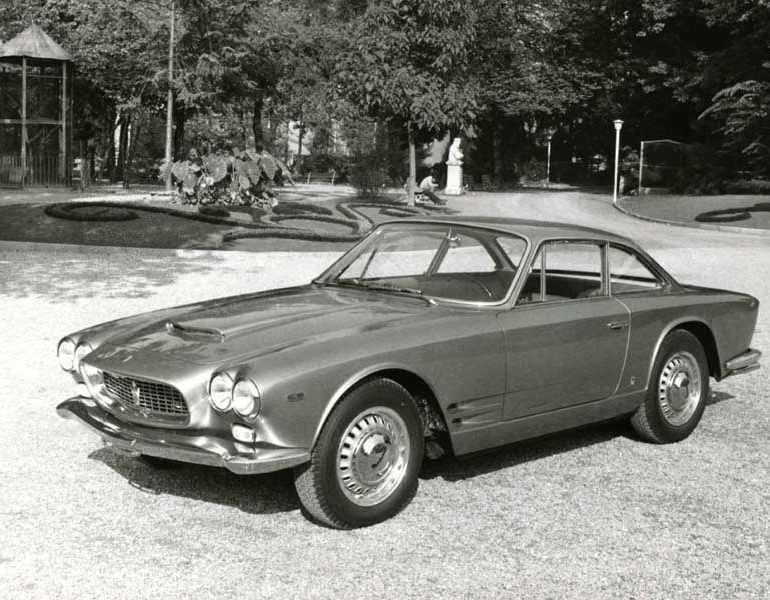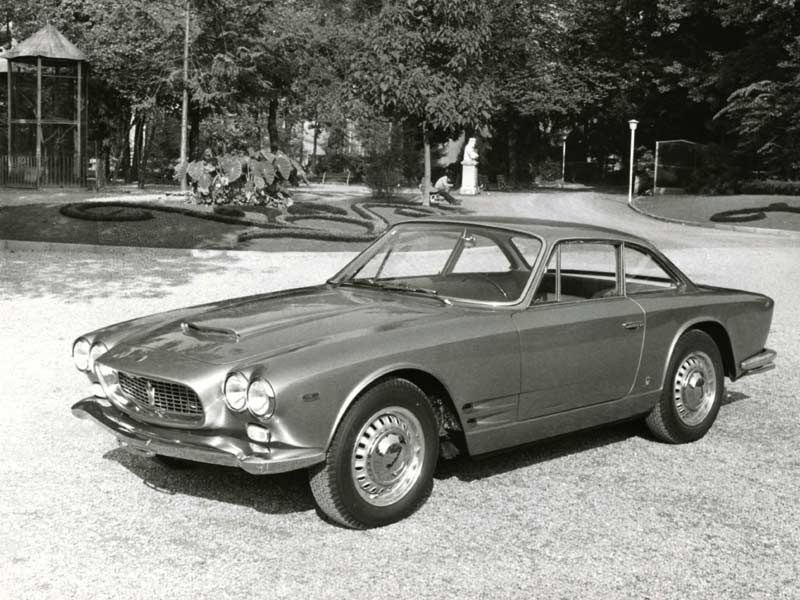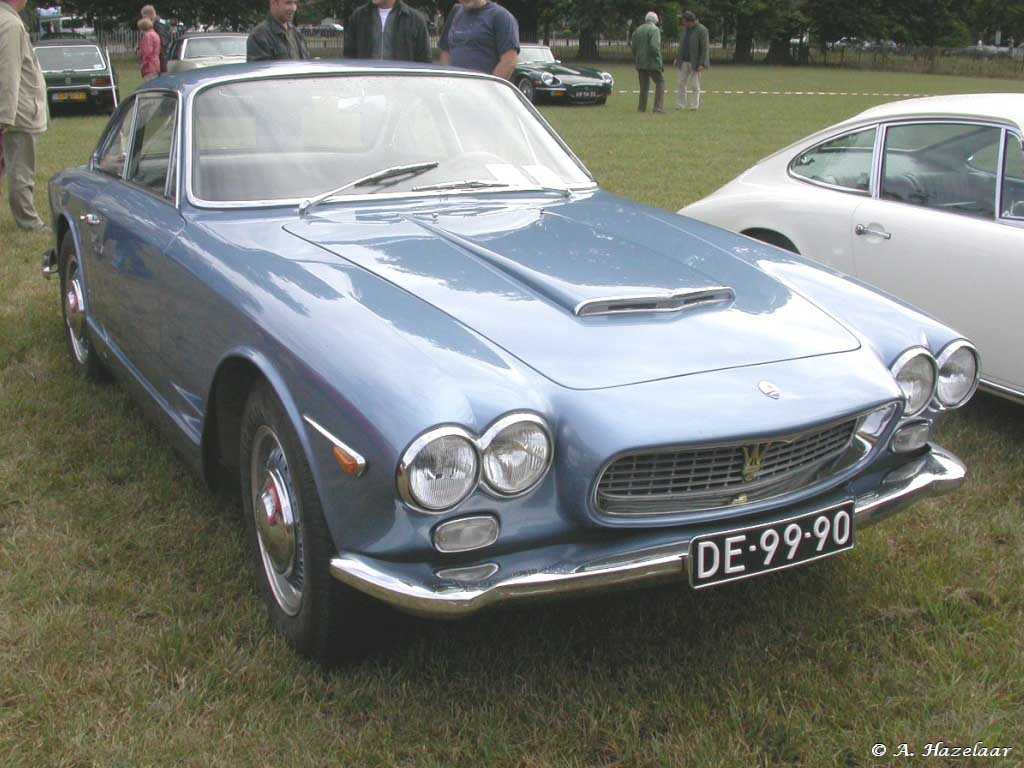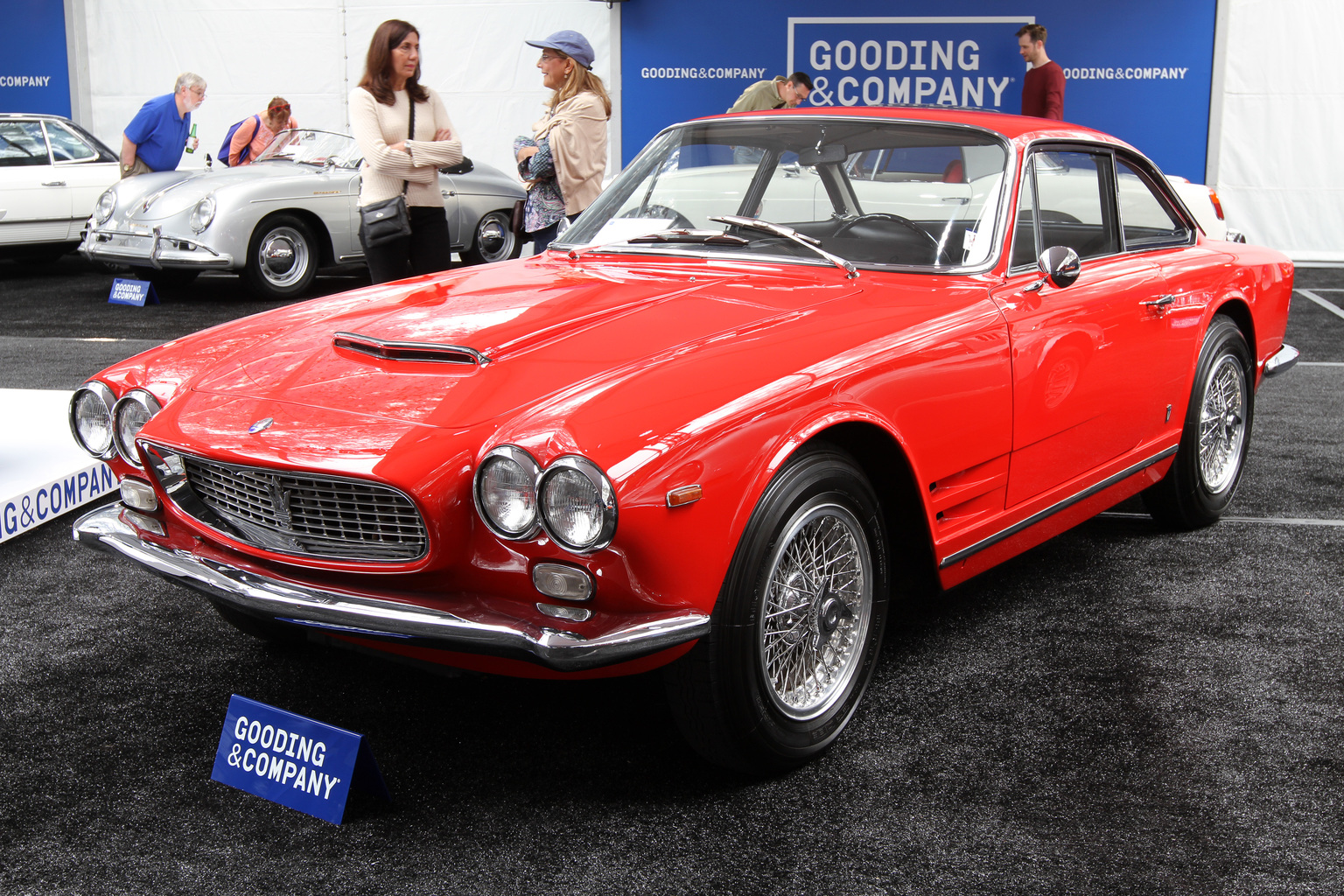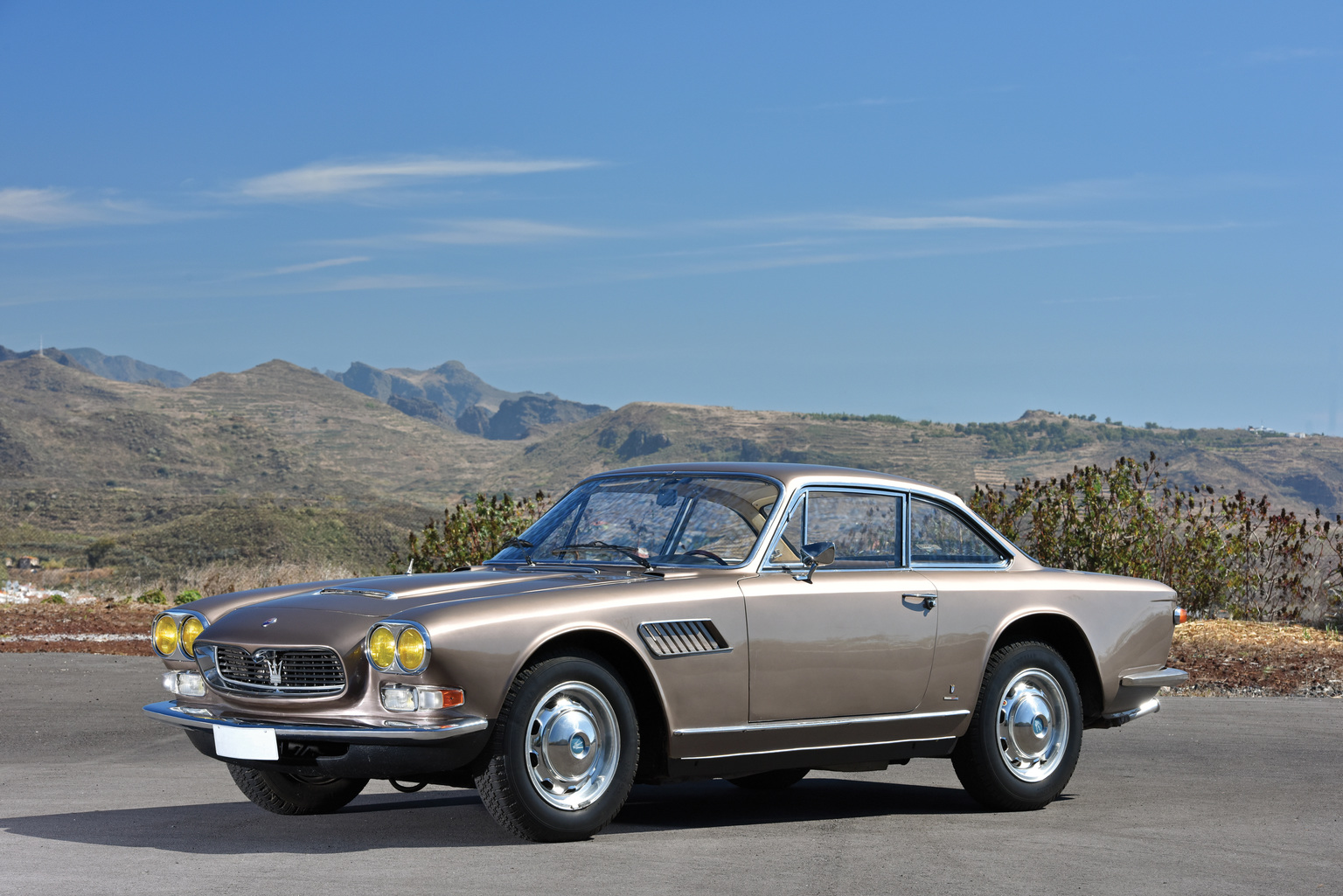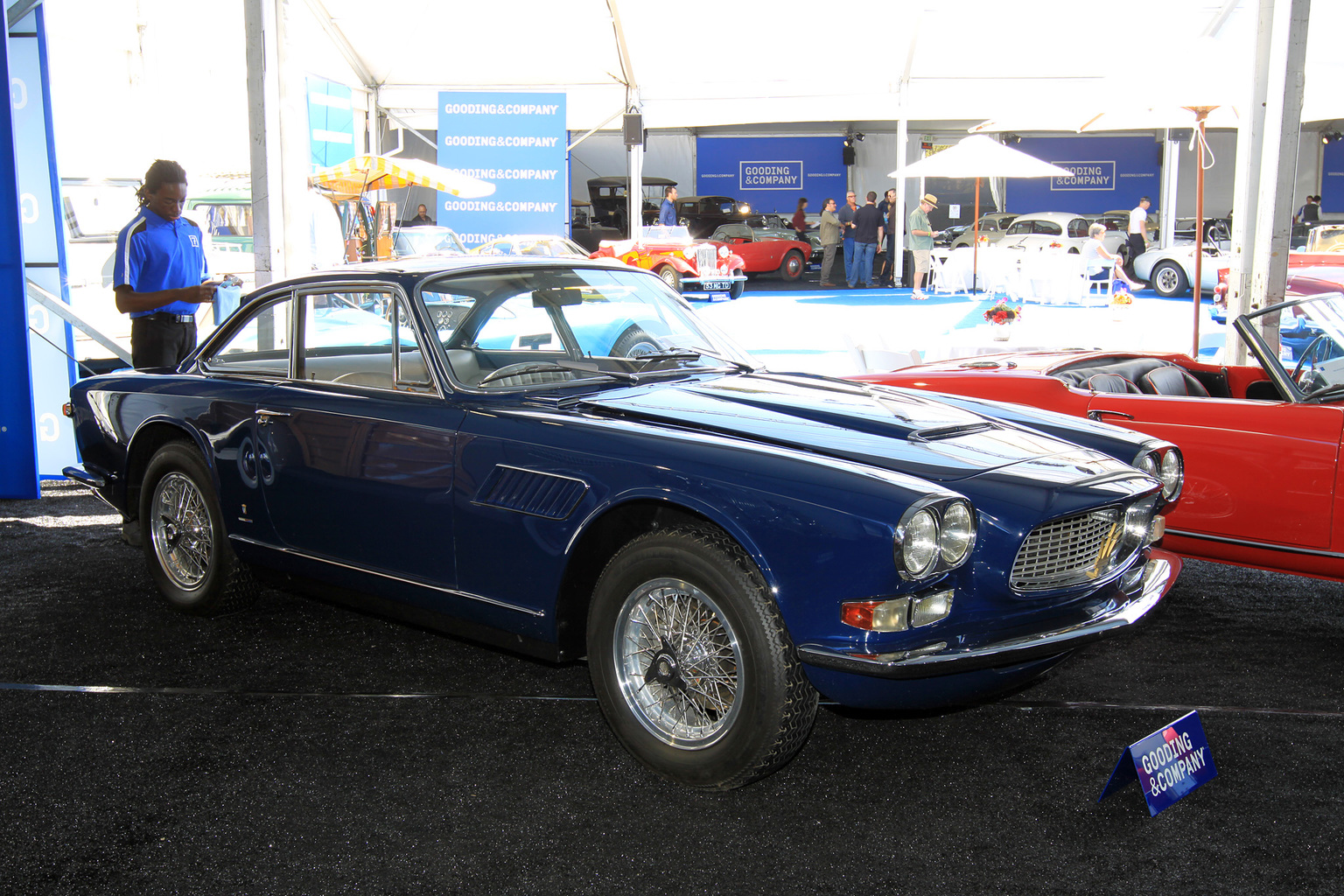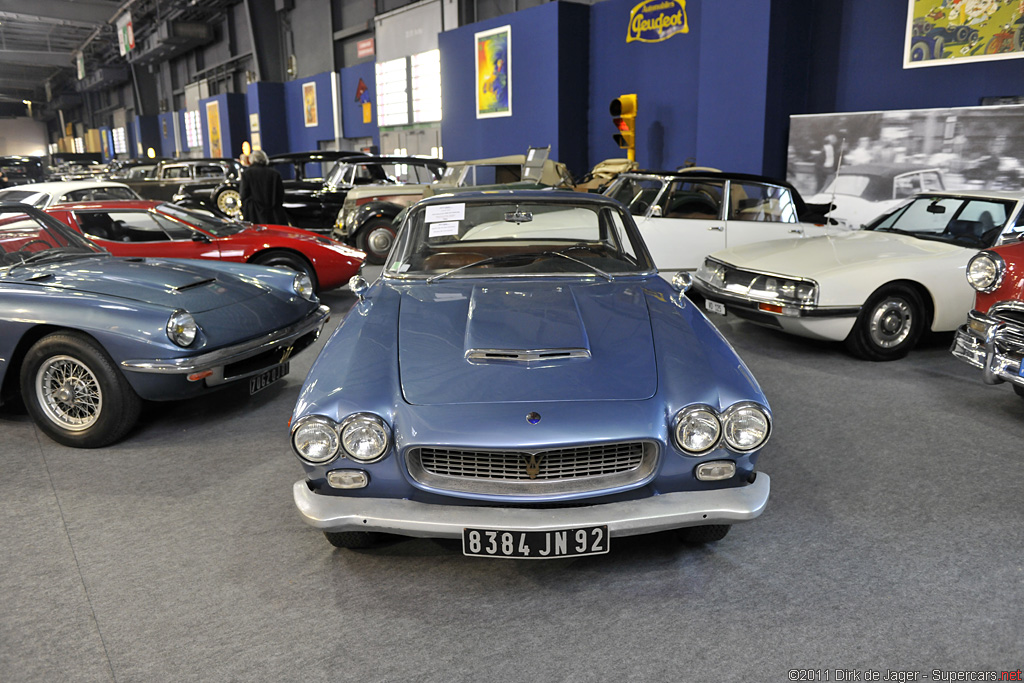1962→1969 Maserati Sebring
In 1961, Vignale presented a stunning coupé variation, based on the Maserati 3500 GT, it was named ‘Sebring’ after the Florida airfield track where, in 1957, Maserati took 1st and 2nd place in the famous 12 Hour race.
The 2+2 coupé entered production the following year alongside the regular 3500 GT with a number of small aesthetic modifications. The chassis was similar to that of the 3500 GT spyder, at 2.5 metres long.
Lucas direct fuel injection was fitted as standard, denoted by the model’s 3500 GTI S title, before the Sebring moniker of the initial prototype became widely adopted. Sportier than the 3500 GT, the Sebring was intended as an occasional 2-plus-2-seater with a simple bench seat in the rear. The engine had 235 hp on tap, generating speeds in excess of 145 mph. Disc brakes came as standard whereas the automatic gearbox was an option.
In 1965 the Maserati Sebring was revised (brochures now referred to it as the “Sebring 2+2”), and tThe 3.7 litre power unit, first introduced with the Mistral, was now available in the Sebring, alongside a 4 litre version. With 265 hp the level of performance was impressive, as attested by the 255 kph top speed (158 mph)
Stylistically, the modifications included a restyled front end with a chrome plate housing the double headlights, a new bonnet intake and the side vents were now located higher up on the front wings. Wire wheels were still available upon request. A combined total of 245 second series Sebrings were assembled.
In Detail
| submitted by | Richard Owen |
| type | Series Production Car |
| production years | 1962 – 1969 |
| built at | Italy |
| coachbuilder | Vignale |
| production | 348 |
| engine | Inline-6 |
| position | Front Longitudinal |
| ignition | Twin-plug w/Coil |
| valvetrain | DOHC, 2 Valves per Cyl |
| fuel feed | Lucas Indirect Fuel Injection |
| displacement | 4014 cc / 244.95 in³ |
| bore | 88 mm / 3.5 in |
| stroke | 110 mm / 4.3 in |
| compression | 8.08:1 |
| power | 190.2 kw / 255 bhp @ 5200 rpm |
| specific output | 63.53 bhp per litre |
| bhp/weight | 165.16 bhp per tonne |
| body / frame | Steel Body over Tubular Steel Frame |
| driven wheels | RWD |
| front tires | 205×15 Pirelli |
| rear tires | 205×15 Pirelli |
| front brakes | Discs |
| rear brakes | Discs |
| steering | Worm & Sector |
| f suspension | Double Wishbones w/Coil Springs, Telescopic Shock Absorbers |
| r suspension | Live Axle w/Longitudinal Leaf Springs, Telescopic Shock Absorbers |
| curb weight | 1544 kg / 3400 lbs |
| wheelbase | 2550 mm / 100.4 in |
| front track | 1390 mm / 54.7 in |
| rear track | 1380 mm / 54.3 in |
| length | 4470 mm / 176.0 in |
| width | 1665 mm / 65.6 in |
| height | 1300 mm / 51.2 in |
| transmission | 5-Speed Manual |
| top speed | ~255 kph / 158.35 mph |
| fuel capacity | 70 litres or 18.48 gal. |
Auction Sales History
1965 Maserati Sebring Series I AM101*02045* – sold for $319,000 One of Only 348 Series I Sebrings Produced. Accompanied by Maserati Classiche Documents. Desirable ZF 5-Speed Manual Gearbox. Exceptional Candidate for Tours and Classic Rallies. Giovanni Michelotti-Designed Coachwork by Vignale.
Auction Source: The 2015 Amelia Island Auction by Gooding & Company
1967 Maserati Sebring 3700 GT Series II AM101S 10589 – sold for €168,000 One of only 98 Series II Sebring Coupés. Matching-numbers example; original interior. A true grand routier capable of 240 km/h. The 1967 Barcelona Motor Show car.
Auction Source: 2015 Paris by RM Auctions
1966 Maserati Sebring Series II AM101/10-367 – sold for $231,000 A Well-Known and Exceptional Example of the Maserati Sebring. Mechanicals Restored by Epifani Restorations, Paint by Perfect Refections. One of the Most Handsomely Styled Production Maseratis.
Auction Source: 2014 Pebble Beach Auctions by Gooding & Company
1964 Maserati 3500 GTi Sebring coupé Vignale – sold for €52,420
This Sebring was sold new in November 1963 to the Maserati dealership at Saint Cloud, near Paris, and the car was registered in 1964. The colour of the car then was “verde dora” and it was equipped with wire wheels, with the interior in brown leather. Its current owner, an English engineer living in France, acquired the car in 1980 at Chartres, following the bankruptcy of a company whose director had been using the car since 1967. He began a mechanical restoration, with the replacement of the sleeves and pistons and rebuilt the crankshaft with pieces from the well known Richard Crump. The suspension was redone by Zuliani at their workshop. At the end of 1980, the body was repainted to a sky blue shade. The original interior and carpets have been retained, with the seats in nice brown Connolly leather with lovely patina. In general, the car is in line with its original appearance despite the chrome rims. It has its original engine, a 235bhp 3.5-litre with injection, mated to a five-speed ZF ‘box. An invoices file accompanies the car, along with an original sales brochure for this very elegant model.
Auction Source: 2012 Artcurial Motorcars à Rétromobile


